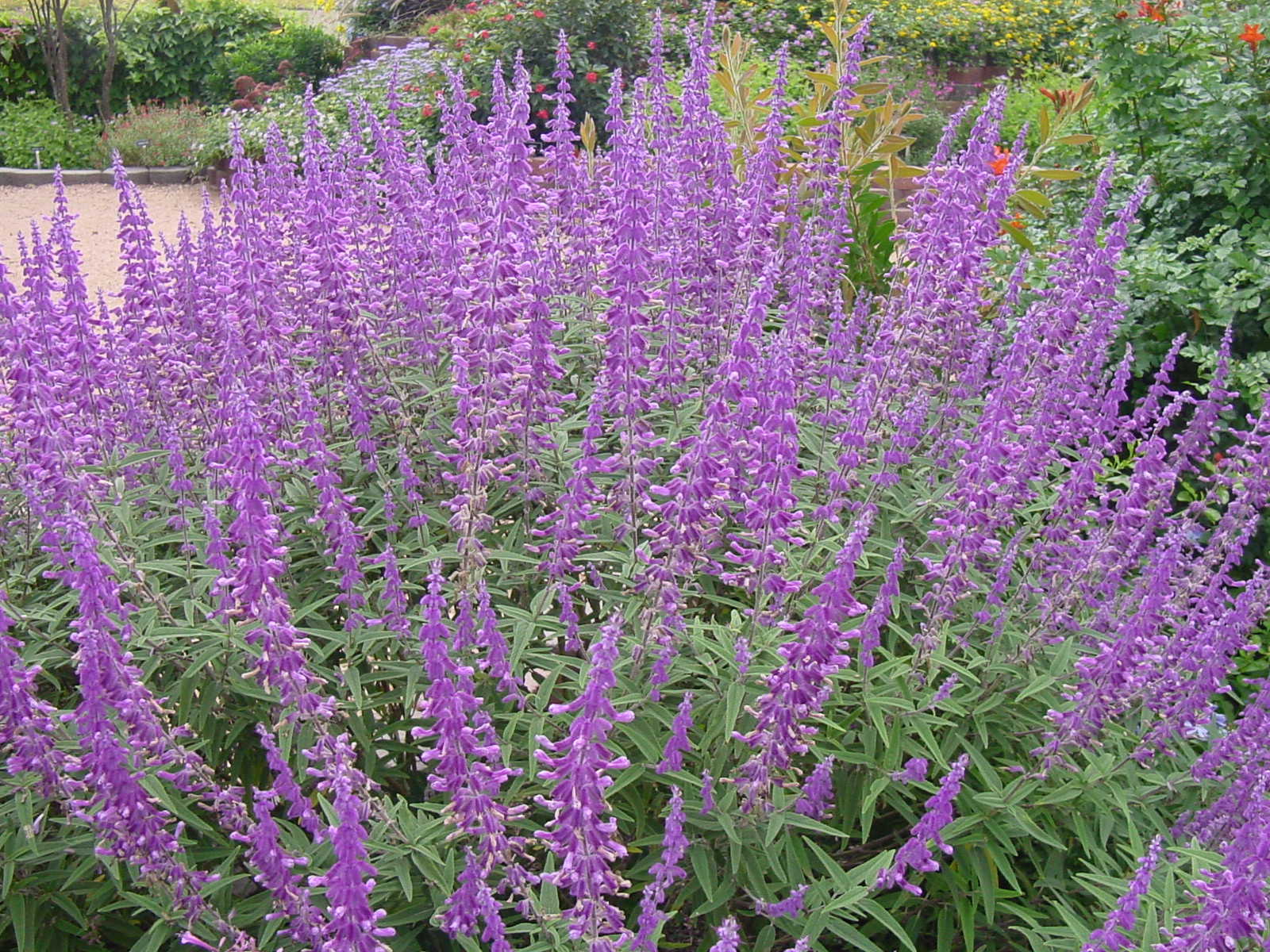


Each bloom cycle is short but plants can bloom repeatedly. Blooming is from summer into fall and usually quickly follows rain or even high humidity. The flowers are usually less than an inch wide but are so abundant in number that they put on a beautiful show of purple, pink, or white blooms. Plants are usually evergreen but some cultivars may go deciduous during the coldest winters. They are covered with small gray or gray-green leaves. Texas sage are medium-sized shrubs, typically to 8 feet tall and wide. This is entirely accurate, for this is a shrubby plant with whitish leaves. Leucophyllum means having white leaves and frutescens means shrubby. Cenizo means ash colored, which describes the leaves, as do the names silverleaf and ash-leaf. The names Texas rain sage and barometer bush come from the fact that the plant often blooms immediately following rain. The plant is not a sage (Salvia ssp.) but it is native to southern Texas and northern Mexico. Texas Sage (Leucophyllum fruitescens) has many common names, including Texas ranger, Texas rain sage, barometer bush, cenizo, silverleaf, and ash-leaf. Texas Sage ‘Green Cloud’ is a recent purchase from Yamagami Nursery in West San Jose. Our Sunnyvale garden has many drought-tolerant plants such as succulents, lavenders, and salvias.


 0 kommentar(er)
0 kommentar(er)
